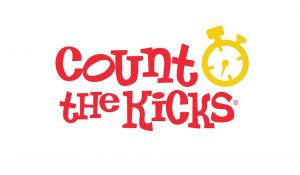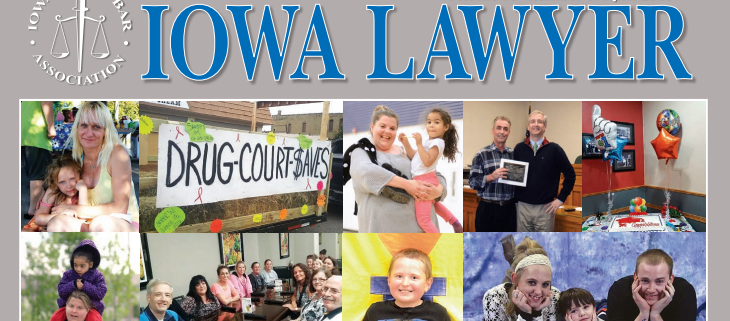This month’s issue of GoFisch is out! Give it a read, subscribe, and pass it along to someone you know who could benefit from the information.
The Community Foundation of Carroll County, along with the Kuemper Catholic School, New Hope Village, and St. Anthony Foundations, teamed up to sponsor the Professional Advisor Continuing Education Program, in Carroll, Iowa. And, I’m excited to say I’ll be the featured speaker!
Lawyers, accountants, insurance agents, and financial advisors are invited to attend.
- This seminar was approved for 2.0 CE Credits by the Iowa Insurance Division, course #10168.
- This seminar was approved for 2.0 CE Credits by the CFP Board, program #238762.
- Thisevent was approved for 2.0 total hours of Continuing Legal Education (CLE) credit, including .5 hours of ethics. The CLE Activity ID is 257823.
My presentation will include example of tools and concepts advisors can utilize with clients such as the Endow Iowa Tax Credit Program (now available through the Community Foundation of Carroll County).
There is no charge for the lunch or program and all area professional and financial advisors are invited and encouraged to attend! Please RSVP to foundation@stanthonyhospital.org or call Stacey Vonnahme at (712) 794-5287 so the event organizers can prepare adequately for lunch and handout materials.
Details
Who: Professional & financial advisors
Date: Wednesday, May 24, 2017
Time: 10:30 a.m.-1:15 p.m.
Where: St. Francis & Clare Meeting Rooms*, St. Anthony Regional Hospital. Park in the St. Anthony parking garage and take an elevator to the 4th floor of the Surgery Center. (Note: do not enter the main hospital building.) Event hosts will greet you as you exit the elevator.
It’s hard to believe a month has passed since the first edition of GoFisch was sent out. Click here to read the latest edition of the monthly newsletter. If you like what you read and want GoFisch delivered right to your inbox, be sure to subscribe!
GoFisch is full of practical information, case studies, and important legal updates. Please know your privacy is of critical importance to me; I won’t share emails with anyone, ever.
If you have a story you think would be great to feature in the newsletter, feel free to contact me at any time by email, gordon@gordonfischerlawfirm.com, or phone at 515-371-6077.
According to the Centers for Disease Control and Prevention, 24,000 babies in America are lost every year to stillbirth. Emily Price learned about this and an inspiring Iowa-based organization, Healthy Birth Day, working to reduce the number of stillbirths in America, for a story she did as a reporter at KCCI-TV. In a recent Des Moines Register article, Price credited the organization with giving her with the knowledge to recognize something wasn’t right with her pregnancy. She brought the concern to her doctor, and ultimately saved the life of her son.
Price (who currently is the Board President, but will assume the role of Executive Director of Healthy Birth Day, Inc. on May 8), said, “Aside from raising our family, it’s the most fulfilling thing I’ve ever done in my life. To hear about a baby saved is the most impactful thing—it stops us in our tracks and we cry tears of joy.”
She was happy to share more about how Healthy Birth Day began, the significant impact the organization has made so far, and details on some exciting developments coming up in the future.
How did Healthy Birth Day come to be?
EP: Healthy Birth Day was created by five Iowa moms (Kate Safris, Kerry Biondi-Morlan, Janet Petersen, Tiffan Yamen, Jan Caruthers) who all lost daughters to stillbirth or infant death in the early 2000s. They took their grief, researched stillbirth prevention methods and discovered that by encouraging moms to track fetal movement in the third trimester that some stillbirths and premature births could be prevented.
(Side note: Since its founding, one of the major accomplishments for the organization was getting the Stillbirth Registry law enacted in Iowa, which has brought over $2 million in to the state for prevention research.)
Scientific studies indicate kick counting, a daily record of a baby’s movements (kicks, rolls, punches, jabs) during the third trimester, is an easy, free and reliable way to monitor a baby’s well-being in addition to regular prenatal visits.
Can you shed some light on Count the Kicks? What’s the campaign about and how has it helped mothers in Iowa?
EP: In Iowa we’ve watched our stillbirth rate drop by 26 percent as the rest of the country’s stillbirth rate has remained stagnant. Some states, like Tennessee, are even seeing stillbirth numbers increase. We have received quite a few stories from moms in Iowa where they’ve been monitoring their baby’s movements, notice a change in how long it’s taking them to get to 10 kicks, call their provider, provider runs tests, tests show a baby in distress, doctor decides to deliver baby via emergency C-section, mom wakes up to doctor telling her, “Congratulations, you saved your baby!” It is incredible to hear and we are so grateful when moms feel empowered to not only count their baby’s kicks, but to also speak up when they notice a change. Sometimes it makes all the difference.
In the five short years after Count the Kicks launched in Iowa, our state went from 33rd worst stillbirth rate to third lowest in the country.
Are there any specific resources related to the organization that people may not know about, but should?
EP: We have a free Count the Kicks! app in Google Play and iTunes online stores that allows expectant moms to monitor their baby’s movement, record the history, set a daily reminder, count for twins, and is available in English and Spanish. We have Count the Kicks Ambassadors in 18 states, a national PSA that’s generated more than 300 million viewer impressions, and a monthly Huffington Post blog that reaches moms across the globe. We also have a growing network of supportive doctors, nurses, hospitals, and clinics that give Count the Kicks materials to their patients. (Count the Kicks materials are free to ALL providers in Iowa, Illinois, and Nebraska!)
We also offer resources on our website and we are on Facebook, Twitter, and Instagram.
A post shared by Count The Kicks (@countthekicksus) on
Does the organization have specific needs from volunteers or donors at this time?
EP: Yes! We have volunteer needs in graphic design, data collection, research, and clerical work, as well as donations to our Save 6,000 Babies campaign. Just being an advocate for kick counting means the world to us. When you know someone who is pregnant, tell them to download our Count the Kicks! app; tell them about the importance of tracking their baby’s movement in the third trimester. We also love when you spread the word about our organization on social media. Share, retweet, like—it all helps spread the word about our campaign. You never know who you might save.
What’s ahead for Healthy Birth Day?
EP: Oh lots of incredible things are happening in 2017! In February we launched the Save 6,000 Babies campaign (the same month our Founders were featured in O Magazine!).
We have a bold vision to save 6,000 babies each year in the U.S. If we can decrease the entire country’s stillbirth rate by 26 percent, we will save more than 6,000 babies every year.
We have a plan in place that will replicate exactly what we have done in Iowa in all 50 states. We are ready to implement this plan just as soon as we have enough funding. To us, this is urgent as we hear far too often from expectant moms who did not know the importance of tracking fetal movement in the third trimester and find us only after losing their precious son or daughter.
In order to go after our goal of saving 6,000 babies every year in the U.S., we need to raise $2 million for increased staffing and programming. This will completely cover our plan to replicate what we have done in Iowa in all 50 states and set us on a true path to success. Success to us equals saving babies.
We are also about to move into our very first office space thanks to the generosity of Telligen Community Initiative. It will be located in a non-profit incubator space near Gray’s Lake and we are thrilled to move in!
If someone wanted to get involved with Healthy Birth Day, how would they go about doing so?
EP: Please send us an email at info@healthybirthday.org! Thank you so much.
Gordon Fischer works with nonprofits and the donors who support them in a number of different ways including coordinating complex gifts. If you’re a nonprofit or looking to maximize the benefits of your charitable gift contact Gordon at any time by email, Gordon@gordonfisherlawfirm.com or by phone at 515-371-6077.
The April 2017 issue of The Iowa Lawyer is out and I’m proud to say my article, “How can you give more to your favorite charity? Consider gifts of stock!” is included. Scroll to page 11 for info that’s helpful on taxes, just in time for Tax Day.
The Iowa Lawyer magazine is The Iowa State Bar Association’s official publication. The magazine features information on legal developments, legislative news, bar history, views from the bench, profiles of legal community leaders, and ISBA events.
Any questions after reading? Feel free to contact me any time to discuss how to maximize the potential of appreciated, long-term, publicly-traded stock. I offer a one-hour free consultation, without any obligation. I can be reached any time at my email, gordon@gordonfischerlawfirm.com, or by phone at 515-371-6077.
In Iowa, Spouses Can’t Disinherit Spouses
Can Monica, my wife, disinherit me? In a word, no.
Assuming a valid marriage in Iowa, a spouse cannot disinherit a spouse. Even if a spouse wants to do so, even if that’s the spouse’s true intent—nope.
What If…?
What if in a legal will, the first-to-die spouse includes the following clause:
“I acknowledge that I have a spouse, named Gordon Fischer, who is not provided for in this will. It is my specific intention to not provide for my spouse Gordon Fischer under the terms of my will.”
Even with a clear clause like this, I, Gordon, am not disinherited. Why is this so?
Statutory “Forced Share”

An Iowa statute allows spouses to take a “forced share” against the will. In short, the surviving spouse has a choice; the spouse can inherit any property bequeathed to him/her under the will, OR the spouse can take a forced share. So, even if a will leaves nothing for the surviving spouse, the surviving spouse can take a forced share against the will.
Under Iowa law (specifically, Iowa Code § 633.238), a surviving spouse that elects against the will is entitled to:
- One-third of the decedent’s real property;
- All exempt personal property that the decedent held; and,
- One-third other personal property of the decedent that is not necessary for payment of debts and other charges.
In other words, a surviving spouse can choose (elect) after your death to basically ignore your will or trust that doesn’t provide for said surviving spouse, and take approximately one-third of your estate.
For example, if you left your entire estate to your children and not your spouse, your spouse can say, “You know, I don’t like this at all. I’ll take one-third of my dead spouse’s estate. Thank you!” And, pretty much just like that, boom, the surviving spouse can do so.
Oral Agreement to Disinherit
What if Monica and I talk about this matter and come to an oral agreement. Something like this:
Monica: I want to disinherit you. Should you be the surviving spouse, you should get nothing.
Gordon: Wow. That hurts. But if that’s what you want honey, I agree.
Is this agreement enforceable? No, for several reasons. First, it’s not written and oral agreements are generally unenforceable. Also, it doesn’t and can’t displace the plain language of an Iowa statue which allows a spouse to elect a forced share against the will, and gain one-third of the estate. You can’t orally agree to ignore a statute’s clear intent!
Written Agreement to Disinherit
But what if Monica asked me to agree, in writing, to not take a spousal share? Say, we write up a formal contract stating I’m essentially not getting anything under Monica’s will, no how, no way. I also agree in the contract that under no circumstances will I take a statutory share.
Would such a written contract be enforceable? No.
While Iowans have a great deal of freedom to contract, just like the above oral agreement example, you can’t contract in direct opposition to a clear statute.
Postnuptial Agreements
Also, interestingly, Iowa courts have ruled postnuptial agreements are not enforceable.

Postnuptial agreements are written contracts between spouses that are executed after the couple has married (as opposed to the prenuptial agreements you usually hear about). Iowa courts have struck down postnuptial agreements for nearly a century, since 1912 when the Iowa Supreme Court first found postnuptial agreements to be of no validity. In re Kennedy’s Estate, 135 N.W. 53 (Iowa 1912).
But Monica, it’s OK. Very likely you’ll be the surviving spouse anyway.
Beyond just your spouse, it’s important to have an updated estate plan to define all of your beneficiaries and wishes for your estate following your death. Have questions or need more information? Feel free to reach out any time. You can contact me by email at Gordon@gordonfischerlawfirm.com or give me a call at 515-371-6077.
I’m proud to be an active Rotarian. I’m also proud to be an Iowa lawyer.
And, I am proud of the singular, perhaps even unique, mission of my law firm. The mission of Gordon Fischer Law Firm is to promote and maximize charitable giving in Iowa.

To achieve this mission, I help individuals, families, and businesses with estate planning that ranges from simple wills to complex trusts. I assist nonprofits reach their philanthropic goals. I guide donors in increasing their charitable giving.
Naturally, my membership in Rotary and the mission of my law firm intersect perfectly when it comes to supporting the Rotary Foundation. The Rotary Foundation does so much good both here at home and around the world.
As the Rotary Foundation states on its website, the Foundation “taps into a global network of Rotarians who invest their time, money, and expertise into our priorities, such as eradicating polio and promoting peace. The Foundation grants empower Rotarians to approach challenges such as poverty, illiteracy, and malnutrition with sustainable solutions that leave a lasting impact.”

As a Rotarian, and as a lawyer, I wanted to share some of my expertise to allow Rotarians to give even more generously, so the Rotary Foundation can continue to do, and perhaps even expand, their great work.
TYPES OF CHARITABLE GIVING
It’s easiest to understand charitable giving by looking at it in two broad categories: giving during lifetime (called inter vivos transfers), and giving at death (testamentary transfers). There is a third category which lawyers call “split interest gifts”—tools that can be used during life or by operation of a will (such as, charitable gift annuities and charitable remainder trusts).
Read on to learn more about testamentary gifts made through your estate plan. Then we’ll talk about charitable giving during your lifetime. Finally, we’ll discuss two special philanthropic tools that can both be used during life and at death.
CHARITABLE GIVING THROUGH YOUR ESTATE PLAN
Estate plan is set of legal documents
An estate plan is simply a set of legal documents to prepare for the event of your death or disability. Note I said “estate plan,” and not “will.” While these terms are often used synonymously, they are not at all the same thing. An estate plan is a set of legal documents, and a will is just one of those documents, albeit an important one.
Six “Must Have” Estate Planning Documents
There are six documents that should be part of most everyone’s estate plan. Plus, you should keep these documents updated and current. Also, don’t forget about assets with beneficiary designations, such as savings and checking accounts, and retirement benefit plans. For many Iowans, that’s enough— keeping six documents and assets with beneficiary designations current.
I’ll just briefly touch on five of the six documents, before we dive into your will and charitable gifting to the Rotary Foundation.
Estate Planning Questionnaire
You should begin with an estate planning questionnaire. (Like this one on my website.) An estate plan questionnaire is an easy way to get all of your information in one place, and it should help you understand and prioritize estate planning goals.
Powers of Attorney
A power of attorney for healthcare designates someone to handle your healthcare decisions for you if you become unable to make those decisions for yourself. This essentially gives another person the power to make medical decisions on your behalf.
The power of attorney for financial matters is similar, only your designated agent has the power to make decisions and act on your behalf regarding your finances. This document gives your agent the authority to pay bills, settle debts, sell property, or anything else that needs to be done if you become incapacitated and unable to do this yourself.
Disposition of Personal Property
Another useful document is the disposition of personal property. This is where you get to be specific about items you want people to have, say, your eldest daughter getting your wedding ring, or your nephew getting your baseball card collection.
Disposition of Final Remains
Yet another helpful document is the disposition of final remains, where you get to tell your loved ones exactly how you want your body to be treated after you pass away. This could include details on burial or cremation, and what type of service(s) you want.
Where there’s a Will, There’s A Way to Help Rotary Foundation
Now let’s get to the will. With your will, you’ll be answering four major questions:
- Who do you want to have your stuff? A will provides orderly distribution of your property at death per your wishes. Your property includes both tangible and intangible things. (An example of tangible items would be your coin collection. An example of an intangible asset would be stocks.)
- Who do you want to be in charge of carrying out your wishes as expressed in the will? The “executor” is the person who will be responsible for making sure the will is carried out as written.
- Who do you want to take care of your kids? If you have minor children (i.e., kids under age 18), you’ll want to designate a legal guardian(s) who will take care of your children until they are adults.
- What charities do you want to support with your estate assets? Which of your favorite causes do you want to support at death, like the Rotary Foundation?
Four Types of Bequests
Charitable gifts in a will are called “bequests.” Generally speaking, there are four types of bequests.
- Pecuniary Bequest: A gift of a fixed or stated sum of money designated in a donor’s will. An example: “I give the sum of $10,000 (ten thousand dollars) to Rotary Foundation.”
- Specific Bequest: A gift of a designated or specific item in the will. The item will most likely be sold by the organization and the proceeds would benefit that nonprofit. An example: “I give my Grant Wood painting to Rotary Foundation.”
- Residuary Bequest: In legal terms, a “residue” of the estate is what is left of the estate after payment of debts, funeral expenses, executors’ fees, taxes, legal, and other expenses incurred in the administration of the estate, and after any gifts of specific assets or specific sums of cash. The estate residue would include all property, both personal and real estate. A residuary clause is a provision in a will that passes the residue of an estate to beneficiaries identified in the will. An example: “I give all of the residue of my estate to the Rotary Foundation.”
- Contingent Bequest: A gift in a will made on the condition of a certain event that might or might not happen. A contingent bequest is specific and fails if the condition is not made. An example: “I give the sum of $10,000 (ten thousand dollars) to my niece, Jane Smith, if still living. If my niece fails to survive me, I give the sum of $10,000 (ten thousand dollars) to the Rotary Foundation.”
Which type of bequest to the Rotary Foundation should you choose? It really depends on your personal circumstances. Consult your individual estate planner for specific advice.
CHARITABLE GIVING DURING LIFETIME
It’s been said, “you should be giving while you are living, so you’re knowing where it’s going.” Many Rotarians have intentions to donate eventually to the Rotary Foundation, often, as we’ve been discussing, at death through their estate plan. But why not give now? You can have more say about your gifts while you are still alive, and also feel the joy that comes with helping the cause you care about most. There are also lots of good tax reasons for giving now rather than later.
Imagine Rotarian Jill Donor, wanting to help her favorite nonprofit. When asked for a charitable gift to the Rotary Foundation, Donor agrees and immediately reaches for her checkbook, or goes online to donate with a debit/credit card.
It’s noble for Donor to give. However, consider this question: should Donor give cash? Or, does Donor own other non-cash assets which might be more tax-savvy? Can Donor be even more generous in support of her favorite cause, while lowering her out-of-pocket costs for charitable gifts?
Also, keep in mind that cash is only a small sliver of Donor’s overall assets and net worth. Even putting aside tax benefits, couldn’t Donor give more to the Rotary Foundation by looking at her much more robust non-cash assets? Let’s explore some non-cash gift options.

Appreciated, Long Term, Publicly Traded Stock
All sorts of non-cash assets can be used for charitable gifts to the Rotary Foundation, but for several reasons, appreciated, long-term, publicly traded stock is a wise choice. It’s convenient to give, you can save money on capital gains taxes you would have paid had you sold the stock, and it’s easy to value.
Endow Iowa Tax Credit
All Iowans should be aware of the Endow Iowa Tax Credit. Endow Iowa allows donors who give qualifying charitable gifts to receive a whopping 25% state tax credit. I have some illustrations showing what great tax savings can be realized by use of the Endow Iowa Tax Credit.
IRA Charitable Rollover
The federal law known as the IRA Charitable Rollover allows individuals aged 70½ and older to donate up to $100,000, tax free, from their IRAs directly to Rotary Foundation. There are two threshold requirements. First, you must be age 70½ or older. Second, the retirement plan account must be an IRA. Want more details? This blog post digs in.
Retirement Benefit Plans
For those not yet 70 ½ and/or who don’t have an IRA, but another type of retirement plan, think about this. Sometimes owners’ retirement benefit plans must make what are called Required Minimum Distributions, or RMDs. Since you must withdraw RMDs, anyway, why not give the money to a worthy charity like Rotary Foundation?
For those who don’t yet have to make RMDs, remember that after age 59 ½, generally you can make withdrawals from your retirement benefit plan without any tax penalty. If indeed there’s no penalty, and you make a charitable gift from your retirement benefit plan, you can presumably take an income tax charitable deduction. This should therefore be a “wash” for tax purposes.
Also, keep in mind: you can make a very meaningful gift simply by naming the Rotary Foundation as beneficiary of an IRA, 401(k), 403(b), or other retirement plan. Giving retirement assets in this way is quite easy. Simply contact the institution holding your retirement plan, request a change of beneficiary form, fill the form out completely and correctly, and return the form. Typically naming a beneficiary in this way does not require drafting or amending a will or trust.
“SPLIT INTEREST” GIFTS
A “split interest” gift is when a donor makes a gift to a qualified charity, like the Rotary Foundation, but retains the right to a portion of the gift. Typically, the gift is divided into lifetime income and asset value at death. The majority of donors retain income during their lifetime.
There are two split interest gifts which might be greatly helpful to donors wanting to support the Rotary Foundation. Let’s discuss each briefly.
Charitable Gift Annuity
A Charitable Gift Annuity (CGA) is a contract. It’s a contract that combines the benefits of an immediate income tax deduction and a lifetime income stream. Also, your future taxable estate will be reduced for the remainder value of the property transferred to charity.
A CGA is an arrangement in which you make a gift of cash, or other property, in exchange for a guaranteed income annuity for life. This is similar to buying an annuity in the commercial marketplace, except that you can claim an immediate charitable tax deduction for the excess of the value of the property over the value of the annuity, based on IRS tables. The charity must receive at least 10% of the initial net value of the property transferred in order for you to claim a charitable deduction for a portion of the purchase price.
There’s much more to say about CGAs. I wrote an article detailing more specifics, as well as their benefit, check it out here.
Charitable Remainder Trust
A charitable remainder trust (CRT) provides a unique opportunity for donors to retain lifetime income from property while obtaining a current income tax deduction (or estate tax deduction) for the remainder interest which will pass to charity.
Charitable remainder trusts are often appealing to donors with appreciated assets, producing little or no income, such as real estate or securities. This is because the assets can be sold without capital gains tax and invested to provide a higher income stream.
A CRT separates the current interest and future interests in property and disposes of each differently. Income from trust assets is paid to at least one non-charitable beneficiary (often, the grantor or the grantor’s family) for a certain period. The payments can be made for the non-charitable beneficiary’s lifetime (or joint lives for multiple beneficiaries), or over a fixed period of up to 20 years. When the non-charitable beneficiary’s interest ends, the trust assets pass irrevocably to a charity. I’m doing a deep dive into CRTs with a three-part series, you can read the first post, here.
SUM IT ALL UP
What all this means is that you, dedicated Rotarian, have a treasure chest of choices when it comes to making charitable gifts that can have an impact. Charitable giving can, and should, be a mutual positive situation that benefits the Rotary Foundation as well as the donor. Of course, this is just the tip of the iceberg. I would love to start a conversation with you about your estate planning and charitable giving goals. Feel free to reach out at any time; you can find me by email at Gordon@gordonfischerlawfirm.com or by phone at 515-371-6077. Or just grab me at Rotary Lunch!
Gordon Fischer has been an active and accomplished Iowa lawyer for more than 20 years. Gordon received his law degree, summa cum laude, from Southern Illinois University. After law school, Gordon clerked for the Iowa Court of Appeals. He then joined the Des Moines firm of Bradshaw, Fowler, Proctor & Fairgrave, P.C. He became a partner and gained a reputation for skilled and conscientious litigation in all areas of law, with a focus on employment. In 2013, Gordon left the firm to become Vice President of Gift Planning Strategies for the Community Foundation of Greater Des Moines, where he helped donors plan and achieve their philanthropic goals. In 2014, he received the Chartered Advisor in Philanthropy designation from The American College of Financial Services.
Gordon serves his community and his profession in a variety of ways, on boards and commissions and as a mentor and hands-on volunteer, and through his involvement as a Rotarian. At Gordon Fischer Law Firm, P.C., he blends his legal expertise and commitment to the charitable sector and those who support its work.
Good afternoon.
Everyone here has done very well in schooling me that I only have three minutes.
Luckily, my life can, more or less, be summed up in just one minute.
I’m proud to be an Iowa Hawkeye.
I’m even prouder to be an Iowa lawyer. I’ve been one for more than 20 years.
I’m most proud of my wife, Monica. We’ll soon celebrate 26 years of marriage.
I have my own law practice, (unimaginatively named) Gordon Fischer Law Firm.
The mission of my law firm is to promote and maximize charitable giving in Iowa.
I do estate planning, wills, trusts, from basic and simple to exceedingly complex. I also help nonprofits, including several in this room, with a wide variety of legal services.
I enjoy movies and music and reading. I’m always looking for new recommendations for books and films.
And, really, that’s about it.
One minute down. What to say in my two remaining minutes?
Rather than talk more about me, I’d much rather talk about you.
We are all aware the Rotary Foundation does tremendous good in the world. And we are all also well aware the more resources the Rotary Foundation has, the more good the Foundation can do.
So, how to increase giving to Rotary Foundation? Let me suggest two ways.
First, we can all think about including Rotary Foundation in our estate planning – in our wills and trusts. If we all left bequests to Rotary Foundation, and the other causes we hold in our hearts, think about the enormous positive difference we would make.
Second, we can all consider charitable gifts, during lifetime, of noncash assets. For example, you could gift stocks or bonds or mutual funds. Or, you could gift real estate. You could make a gift from your IRA or 401k or other retirement plan.
Sometimes when you consider all your assets, including noncash assets, and your estate plan, it allows you to be a bit more generous. Or even a lot more generous!
How to get more Iowans to consider charitable giving, both through their estate plan, and during lifetime with noncash assets? Obviously, a topic for when we have much, much more time.
But I’m really interested in starting a dialogue on these subjects. And I’d suggest a good first step — I’m doing a workshop on the topics of estate planning and charitable giving, there are flyers at your tables.
Monday, April 25, from 2:00 to 3:30.
Iowa City Senior Center.
Free and open to all.
I promise the workshop will be interesting and informative and well worth your time.
In conclusion, it’s a great honor to be a Rotarian. Thank you all for your time and attention.
####
I work with Iowa nonprofits, and the donors who fund them — more here. But today, Friday, is perhaps a particularly good reminder about the importance of charities and charitable giving.
My favorite hour of the week happens on Friday — from 9 a.m. to 10 a.m., Iowa time. Every week the great Tom Ashbrook of NPR‘s On Point summarizes the news of the week. It’s just a great news show, and especially on Friday, as it catches me up on anything I’ve missed during the week.
Later today, Monica and I will walk down from our new place to Fry Fest, to join everyone in a huge pep rally. Whether you are a Hawkeye, or a fan of another team, the kick off of a college football season is so much fun!
Two important institutions — Iowa Public Radio and The University of Iowa / your own alma mater — which both rely heavily on the generosity of charitable givers. Happy Friday to all!
Gordon Fischer Law Firm, P.C. is dedicated to promoting and maximizing charitable giving in Iowa. Gordon can be reached by phone at 515-371-6077; by email at gordon@gordonfischerlawfirm.com; and through his website at www.gordonfischerlawfirm.com.
Please consider Gordon’s request for you to sign up for his free e-newsletter and encourage others to do the same. A quick and easy sign-up is here. Also, please forward the subscription page to any person or group you think might be interested.
Be social with Gordon. Please “like” Gordon Fischer Law Firm’s Facebook page, follow Gordon on Twitter, and connect with Gordon on LinkedIn and Google+. Links:
Facebook:
https://www.facebook.com/gordonfischerlawfirm
Twitter:
https://twitter.com/FischerGordon
LinkedIn:
https://www.linkedin.com/in/fischergordon
Google+:
https://plus.google.com/117606850043111451177/posts/p/pub
####
I love National Public Radio and Iowa Public Radio.
Wait, let me amend that: I LOVE NPR and IPR!
NPR and IPR provide the soundtrack to our lives. I’m a constant listener, Monica even more so.
On this date in 1971 — May 3 — the afternoon drive-time newscast All Things Considered first aired.
So this seems a good day to help NPR and IPR raise more money.
There are six easy ways NPR and IPR could raise more money. All six ways could be implemented with little or no cost, and not even that much time.
Reader, please take note: these helpful hints apply to any nonprofit. Almost any nonprofit could use these tips to raise more money and grow.
Tip one: NPR and IPR should urge listeners to consider all their assets for potential gifts.
To give smart, donors and potential donors need to consider all their assets. Don’t consider cash, and cash only, but look at your entire basket.
Allow me to illustrate with three real-world examples.
A farmer generally doesn’t have a lot of cash on hand – we’ve all heard the phrase, “land rich, cash poor.” But farmland itself can be a very tax-savvy gift, and so can gifts of grain.
A young person who is self-employed doesn’t have a lot of cash on hand. But this young person inherited an IRA from a relative, and must make annual required minimum distributions [RMDs].
IRA RMDs can be a tax-wise gift.
A married couple, recently retired, own three life insurance policies. This made lots of sense when their kids were younger, but now their kids are all grown up and successful on their own.
It may be that a paid up life insurance policy could be signed over to their favorite charity.
NPR and IPR should let their donors know everyone’s individual facts and circumstances are unique. Donors should consider seeking personalized counsel to look at their whole basket of assets.
Tip two: NPR and IPR should educate listeners about the value of the federal income tax charitable deduction.
For a discussion of tax brackets, see my post called bracketology. In short, as of May 2015, there are seven federal income tax brackets: 10%, 15%, 25%, 28%, 33%, 35% and 39.6%.
The charitable deduction can result in significant tax savings.
For example, assume a donor in the 33% tax bracket gives to her favorite qualified charitable organization a donation of $100.
The charity still receives the full gift of $100. But, for the donor, the actual out-of-pocket cost of the gift is only $67, and the donor saves $33.
Let’s make these assumptions for all tax brackets and see the savings which result:
Bracket Donation Savings Cost
10% $100 $10 $90
15% $100 $15 $85
25% $100 $25 $75
28% $100 $28 $72
33% $100 $33 $67
35% $100 $35 $65
39.6% $100 $39.60 $60.40
NOTE: ABOVE TABLE IS FOR ILLUSTRATIVE PURPOSES ONLY. ONLY YOUR OWN FINANCIAL OR TAX ADVISOR CAN ADVISE IN THESE MATTERS.
As can be seen, significant tax savings can result. The charitable deduction is valuable.
Tip three: NPR and IPR should broadcast the record keeping requirements for the charitable deduction.
The charitable deduction requires you to be organized in your giving and maintain records. Generally speaking, the greater the deduction, the more detailed the records you are required to keep.
For example, to receive a charitable deduction for gifts of more than $5,000, you need a “qualified appraisal” by a “qualified appraiser.” These two terms have very specific meanings to the IRS.
NPR and IPR should let people know about these requirements. And let folks know they need to engage the right professionals to be sure all requirements are met.
Tip four: NPR and IPR should urge listeners to consider gifts of long term capital gains property [like stocks].
Gifts of long-term capital assets, such as publicly traded stock and real estate, may receive a double federal tax benefit.
First, donors can receive an immediate charitable deduction off federal income tax, equal to the fair market value of the stock or real estate.
Second, assuming the donor owned the asset for more than one year, when the asset is donated, the donor can avoid long-term capital gain taxes which would have been owed if the asset was sold.
Let’s look at a concrete example to make this clearer. Pat owns stock with a fair market value of $1,000. She wants to use the stock to help her favorite causes, which include NPR and IPR.
Which would be better for Pat – to sell the stock and donate the cash, or gift the stock directly to public radio?
Assume the stock was originally purchased at $200 (basis), Pat’s income tax rate is 39.6%, and her capital gains tax rate is 20%.
Donate cash proceeds after sale Donate stock
Value of gift $1,000 $1,000
Federal charitable deduction ($396) ($396)
Federal capital gains tax savings $0 ($160)
Out-of-pocket cost of gift $604 $444
NOTE: ABOVE TABLE IS FOR ILLUSTRATIVE PURPOSES ONLY. ONLY YOUR OWN FINANCIAL OR TAX ADVISOR CAN ADVISE IN THESE MATTERS.
Again, a gift of long-term capital assets, such as stocks or real estate, made during lifetime, can be doubly beneficial.
The donor can receive a federal income tax charitable deduction equal to the fair market value of the asset. The donor can also avoid capital gains tax.
Tip five: NPR and IPR should ask listeners to consider the Endow Iowa Tax Credit program.
In Iowa, there is even more potential tax benefit. Donors can receive a 25% state tax credit for gifts made during lifetime, lowering the after tax cost of charitable gifts even further.
Under the Endow Iowa Tax Credit program, gifts made during lifetime can be eligible for a 25% tax credit. There are three requirements to qualify.
First, the gift must be given to, or receipted by, a qualified Iowa community foundation (there’s a local community foundation near you).
Second, the gift must be made to an Iowa charity.
Third, the gift must be endowed – that is, a permanent gift.
Under Endow Iowa, no more than 5% of the gift can be granted each year – the rest is held by, and invested by, your local community foundation.
Clearly, this final requirement is a major restriction. Still, in exchange for a 25% state tax credit, it must be seriously considered by Iowa donors.
Tip six: NPR and IPR should engage listeners to combine all these tips!
Let’s look again at the case of Pat, who is donating stock per the table above. If Pat makes an Endow Iowa qualifying gift, the tax savings are very dramatic:
Tax benefits of a donation of long-term capital gain asset with Endow Iowa Tax Credit
Value of gift $1,000
Federal charitable deduction ($396)
Federal capital gains tax savings ($160)
Endow Iowa Tax Credit ($250)
Out of pocket cost of gift $194
NOTE: ABOVE TABLE IS FOR ILLUSTRATIVE PURPOSES ONLY. ONLY YOUR OWN FINANCIAL OR TAX ADVISOR CAN ADVISE IN THESE MATTERS.
Note well Pat’s significant tax savings.
In this scenario, Pat receives $396 as a federal charitable deduction, avoids $160 of capital gains taxes, and gains a state tax credit for $250, for a total tax savings of $806.
Put another way, Pat made a gift of $1,000 to her favorite charity, but the out of pocket cost of the gift to her was less than $200.
Of course, all Iowans are unique and have unique legal and tax challenges. Consult your own professional advisor for personal advice.














